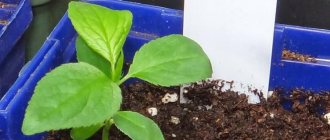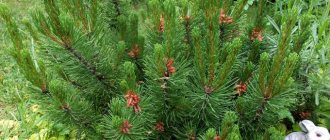Description
Opuntia microdasys, or small-haired prickly pear, is an unusual, very interesting plant. Its distinctive feature is that it looks like a small bush consisting of several flat stems. The plant tends to create upward increments, so the stems appear as a collection of numerous elements. It grows to approximately 40-60 cm in height. Individual elements of the stem reach a length of 6-15 cm and a width of 4-12 cm. This species does not have thorns, but there are numerous white or yellow (2-3 mm long) so-called glochids, collected in dense groups. Glochids are a special form of spines - very fragile hairy spines. They end in a sharp hook that quickly and painfully adheres to the skin, causing erythema and redness. A small thorn is difficult to remove.
Prickly pear (pictured) blooms with large, very beautiful, yellow flowers that appear at the top of its stems. Sometimes they tend to be much larger than the particular stem element.
The fruits of the plant are edible and are used in the food industry. Their characteristic sweet and slightly sour taste is an excellent addition to desserts; they can be added to salads or eaten simply by peeling them first. However, it is difficult to obtain the fruit at home. The small and red fruits appear at the top of the tallest elements of the stems.
Signs and superstitions associated with prickly pear
In ancient times, spiny cacti were used in the fight against uninvited guests, placing them on window sills or near doors. The robber or thief had to run into thorns and abandon his evil plans. Later, this superstition became attached to the prickly pear as a protector against sorcerers, the evil eye and damage.
Reference! Contrary to this, the beneficial properties of the cactus are associated with its real bactericidal and antiseptic properties; it is a natural antibiotic that disinfects and heals wounds, improves blood circulation, and normalizes blood pressure. Prickly pear juice reduces headaches, hangovers, and restores strength.
In home floriculture, prickly pear is valued most of all for the unique beauty and variety of its inflorescences. In order for a culture to bloom, it is worth trying and creating all the necessary conditions for this, especially since its unpretentiousness will not require exorbitant efforts.
Chemical composition and toxicity
The plant is a source of vitamins A, C, E, B 1, B 6, calcium, magnesium, sodium, potassium, phosphorus, iron and fiber. Includes sugars (glucose, galactose, arabinose, xylose, rhamnose), organic acids (tartaric acid, oxalic acid, succinic acid), flavonoids (quercetin, kaempferol), lactones, terpenes (for example, lupenone), alkaloids (mesculin, hordenine, tyramine) and betalans (betacantin, betajanine). The flowers and stems of the plant are used to make medicinal ointments and cosmetics. Decoctions of them help in the treatment of diseases of the liver and circulatory system.
Preparations with prickly pear are well tolerated and are not toxic. The only adverse symptoms that were noted after their consumption were nausea, increased stool volume and frequency, mild diarrhea, and headache.
Kinds
The cactus family represents more than 2,000 plant species. In this great family there is also the prickly pear, numbering about 150 species. The vast majority of these plants come from North and South America, with some species grown for their tasty fruit.
Many of them are gigantic in size. Popular varieties suitable for indoor growing, except for prickly pear, are:
- Berger's prickly pear is a tall succulent with a bright green stem. The ovoid leaves reach a length of up to 25 cm. Rare areoles are equipped with long yellow spines. Blooms profusely with orange-yellow bells.
- Prickly pear long-awned is a creeping cactus consisting of small light green lobes up to 4 cm long. The surface of the plant is densely covered with thin, short needles. The flowers are wide-open orange bells.
- Opuntia brittle is a short, erect succulent with highly branched stems. Characterized by a rounded rather than flattened shape of the lobes. The length of each lobe is only 2-3 cm. The plant is covered with very short whitish spines. Flowers are light yellow.
Propagation of cacti by seeds
Cactus propagation by seeds is not always effective. In many species of these plants, the seeds are very small, germinate poorly or are very capricious and require strict adherence to many conditions - from temperature, light and humidity to soil composition.
But if your cactus seeds are fresh, large, healthy and you are confident in your skills and abilities as a gardener, you can try to master this procedure.
Cactus seeds can be sown in the ground starting from February-March. To disinfect them before sowing, it is better to soak them for a short time (8-10 hours) in a slightly pink solution of potassium permanganate.
Soil for cacti is suitable from a mixture of peat and coarse sand (2:1), pre-calcined in the oven or spilled with boiling water. A layer of drainage must be poured onto the bottom of a disinfected small pot and only then filled with soil mixture.
Cactus seeds are laid directly on the surface of well-moistened and slightly compacted soil at a distance of at least 2 cm from each other. It is not necessary to sprinkle them with soil on top - this can only be done for large seeds.
The container with the seeds is covered with glass or film and placed in the warmest place, remembering to ensure that condensation does not accumulate on the inner surface of the shelter. The night temperature in such a greenhouse should be several degrees lower than the daytime temperature.
Shoots will have to wait from several days to several weeks, depending on the chosen type of cactus. As soon as the sprouts appear, they need to be provided with a sufficient amount of light; it is recommended to move the film or glass from time to time so that there is a constant flow of fresh air, and then remove it completely. Of course, a place with young growing cacti should be protected from drafts and direct burning sunlight.
As for the issue of watering seedlings, you need to be very careful and careful - both a lack and an excess of moisture are equally destructive for growing cacti. The soil should ideally be slightly moist at all times, but not wet.
Grown cacti, which have begun to develop thorns, can be transplanted into individual pots - the plants are carefully transferred with a lump of near-root soil, in no case burying the root collars when planting.
Microdasys Opuntia - cultivation requirements
Prickly pear needs the same conditions as most cacti. First of all, the plant does not like shade. It should be in a clear place where it will receive the greatest dose of sunlight. During the season, the ideal temperature for it is 21-35 degrees Celsius.
Prickly pear must be provided with a suitable substrate. It can grow in standard potting soil, but will still do much better in specialized cactus soil. A small layer of drainage should be placed at the bottom of the pots.
Soil and pot
The Opuntia cactus needs light and slightly acidic soil, as the plant has a weak root system. The flower pot is chosen to be wide and shallow. You can prepare the soil mixture yourself or purchase soil for cacti. When preparing the mixture yourself, you need to take the following components:
- turf soil (2 hours);
- leaf soil (4 hours);
- clay (2 hours);
- sand (1 hour).
This may be interesting: Lithops - care and maintenance of living stones
Crushed charcoal, expanded clay or broken brick are added there. A layer of drainage must be poured onto the bottom, and the bottom of the pot must have good drainage holes.
Important! For cacti, humus is not added to the soil mixture.
Small-haired prickly pear - home care
The plant does not need special care. The only thing you need to remember about caring for it is watering. Prickly pear is tolerant of temporary dryness of the substrate. She doesn't like excess moisture, because then it can start to rot. It is best to water the flower when the substrate in the pot is already dry. Excess water remaining in the pot stand should be removed. In winter, watering is limited to the required minimum.
During the growing season, you can feed the plant every 2 weeks with cactus fertilizer in a dose less than half that recommended on the package. Thanks to this, the plant will develop better. Fertilizer can encourage the plant to flower faster. A month before the planned rest period, it is necessary to stop feeding.
How do cacti reproduce?
The plant can be propagated in 2 ways - by children and seeds.
The first method is considered the simplest and most effective method; most flower growers do just that.
Despite the fact that propagating cacti with seeds is much more difficult - the process is very labor-intensive, but very exciting. It is very interesting to watch how small fluffy cones appear, which turn into miniature copies of future cacti.
Propagation of cacti by children, cuttings or vegetative method
But let’s consider the simplest and fastest method – vegetative. From an adult plant, they take a baby that has already formed its own small roots and transfer it to a small container with a substrate - rooting occurs very quickly.
How to propagate a cactus by seeds:
- You should buy ready-made seeds in the store, since it is very difficult to get them from your own plants, and their germination rate is minimal.
- The container for germination should be flat, with low edges; washed river sand is poured into it and moistened.
- Seeds are sown on the surface - without burying them - and an improvised greenhouse is set up, placing the crops under the film.
- Airing once every 2 days until the first shoots appear. High humidity must be maintained at all times.
- The appearance of small sprouts depends on the plant variety; some are forced every other day, while others have to wait for weeks.
According to psychologists, cactus lovers are stingy with emotions, but this is just a stereotype. In reality, they are vulnerable and sensitive creatures. An emotional person cannot help but pore over a plant and take care of it so that it blooms every year.
Transfer
The plant is replanted only when its roots fill the entire pot. The procedure is carried out in late spring. The succulent is transplanted into a larger pot than the previous one. The soil for growing the plant should be the same as for cacti, that is, poor and airy - based on peat and sand. Proper drainage and holes in the bottom of the container to drain excess water are important. When replanting, you can place broken pieces of ceramic pot, stones or coarse gravel at the bottom of the container.
When replanting plants, be careful with thorns, which can cause inflammation of the epidermis. All work should be done with gloves or the plant should be covered with hard paper.
Briefly about diseases and pests
- Lack of light causes stunted growth and leaves become deformed.
- Increased air temperature during dormancy stops flowering and the stems become elongated.
- Due to dampness of the soil, drafts and cold, the substrate turns sour, the leaves dry out and fall off.
- Fungal infections are the most dangerous for this flower. The stem becomes brown, the entire bush becomes covered with mold. The reason is high humidity. The plant is discarded. Treatment of healthy flowers and substrate with a fungicide is required for prevention.
- An urgent plant transplant will help against root nematodes. The affected roots are cut off, the root is immersed in hot water for 5 - 10 minutes. The substrate and pot are sterilized.
- Timely treatment of the plant and soil with any insecticides will help prevent scale insects, aphids, spiderbugs, and other pests.
You can learn about diseases and pests of cacti in these materials.
Wintering rules
In the case of the prickly pear cactus, it is important to observe the temperature regime. If you don't provide the right conditions for the plant, it will most likely die next year. Gradually, the flower is prepared for the winter period - for this, the temperature is slowly reduced below 18 degrees Celsius. This is not difficult - the plant can stand in a cool bedroom or in an unheated corridor.
During wintering, prickly pear should not be fertilized. It should not be watered too often; on the contrary, at this time you should limit watering even more. In spring, it is necessary to gradually increase the temperature in the room, and around March, move the flower to a permanent place. If the plant has successfully survived the winter period, you will see its intensive growth and further flowering.
Useful properties of cactus
Prickly pear cactus.
Photo Significantly reduces the level of radiation in the room. It neutralizes dangerous electromagnetic radiation, which is why the cactus is often placed next to household electrical appliances and computers. In different countries, the fruits are eaten. They are used in medicine, as well as in the production of glue, dyes, and detergents. Prickly pear oil is used in cosmetology.
Small-haired prickly pear - reproduction
The best way to reproduce the plant is to take cuttings into separate pieces, which will take root very quickly. The element intended for propagation is separated from the plant, the cut site is cleared of milky juice and treated with crushed activated carbon and air-dried for 3-4 days. Then the cutting is placed (not deepened too much) into a permeable and constantly moist substrate. Subsequently, the seedlings are kept in a bright place at a temperature of +20 °C under a film. 2-3 weeks after they take root, they can be transplanted into pots.
Now you know what care for prickly pear is needed at home.
What do cactus seeds look like?
In addition, this is the cheapest option for creating your own collection.
Of course, you can buy already grown plants, but here a novice cactus grower will face many pitfalls and disappointments. Purchased specimens may be affected by pests and rot, and cacti grown with fertilizers stubbornly refuse to grow in ordinary soil. In addition, cacti that have been in stores for a long time with a lack of light often have stems that are hopelessly damaged. Finally, the attitude towards these cacti will be completely different than towards plants grown by yourself. Before planting cacti, you need to get the seeds from somewhere. Purchasing planting material will not cause much difficulty. They can be bought in clubs for cactus lovers, borrowed from friends, ordered from private catalogs, and finally purchased via the Internet. The rest of the seed is filled with a nutrient substance called endosperm. On the shell you can distinguish a hilum - the place where the seed is attached and a micropyle - a narrow channel through which the pollen tube penetrates and fertilization occurs. When seeds germinate, the root elongates and penetrates into the soil. At the beginning of germination, all cells of the embryo divide, but after the formation of the seedling, cell division is localized at the tips of the shoot and root.
The seeds of rebutia, ailostera and some other genera have a short life. The period for germination of cacti from such seeds is limited to approximately one year. Conversely, in representatives of the genus Cereus and Mammillaria, the lifespan of seeds can reach 7-9 years. Longer-living seeds are also known. In addition to biological reasons, the lifespan of seeds depends on their storage conditions. There are two independent rules for storing seeds: 1) with an increase in water in seeds by 1% (with an optimum of 5-14%), their lifespan is reduced by 2 times. At the same time, below the optimum, oxidation of seed fats occurs, above the optimum, fungal damage occurs; 2) with an increase in temperature for every 5 °C (in the range of 0-50 °C), the lifespan of seeds is also reduced by 2 times. In other words, so that cactus seeds do not lose their viability, it is advisable to store them in the optimal range of temperatures and humidity, without changing these parameters if possible. For cactus seeds, a good place to store seeds is on the shelf on the door of your home refrigerator.
Next, you will learn how to plant cactus seeds and how to care for the sprouts.











